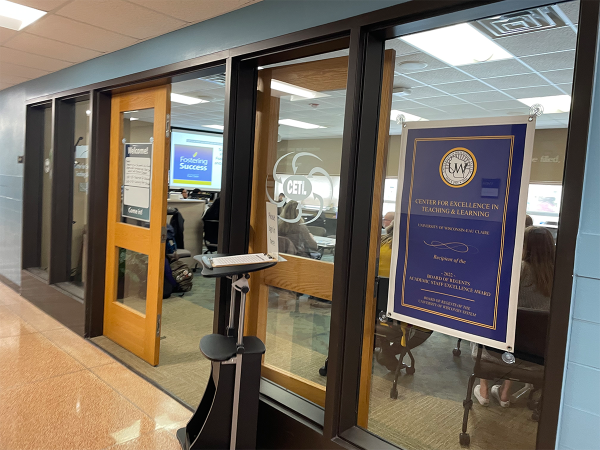Chippewa County turnover rate increasing
What this recent rise in turnover rate means for UW-Eau Claire students.
More stories from Thomas Hensen
Close to one out of every five employees left their jobs in Chippewa County in 2015, according to a Feb. 15 report by the Leader-Telegram.
The Chippewa County’s employee turnover rate increased significantly since 2013, rising from 10.5 percent to 19 percent this past year.
Eau Claire County experienced a similar yet not as extreme effect, with its turnover rate rising from 7.7 percent in 2013 to 11.6 percent in 2015, according to the article.
With baby boomers beginning to hit retirement age, legislation like Act 10 being implemented in recent years and Eau Claire going through some major economic changes, it’s no wonder the local job market is in a state of uncertainty, Chippewa County Administrator Frank Pascarella said.
Although turnover rate doesn’t represent unemployment rate by any means, it certainly indicates people are becoming less satisfied with their jobs, Pascarella said.
Pascarella said he anticipated Chippewa County job positions would become increasingly difficult to fill as the baby boomers started hitting retirement age.
However, the turnover rate can’t be associated with one single factor, Pascarella said.
“It’s a culmination of issues,” Pascarella said. “… Part of the issue is making sure we maintain market viability so we both retain and recruit proper people for the county.”
Other factors include the performance-based pay plan — adopted in 2013 and implemented last year — which determines county employee pay based on performance rather than seniority and Act 10, a bill signed by Gov. Walker in 2011 that affected collective bargaining, compensation, retirement, health insurance and sick leave for employees of the public sector, Pascarella said.
“Obviously when Act 10 did come into play there was an exodus of personnel,” Pascarella said.
The goal for Chippewa County moving forward is to stay competitive within the job market in order to attract recent graduates like those of UW-Eau Claire, Pascarella said.
Although Act 10 had a major effect on the public work force at the time, graduates are still looking for and finding work within the state, Associate Director of Career Services Staci Heidtke said. Each year, Eau Claire’s Career Services publishes a First Destination Survey Report. The report aims to determine the success of the university’s preparation of its graduates by looking at where and in what fields they are working.
Heidtke said as baby boomers are reaching retirement age and Eau Claire is experiencing economic growth the local job market is actually expanding.
“There’s a real skills gap in the Chippewa Valley and that’s based on retirement but it’s also growth of companies,” Heidtke said. “They have money and the job market is a lot better.”
The problem, Pascarella said, is filling positions that don’t require higher education degrees.
According to the Eau Claire Area Economic Development Corporation, the area has experienced a lot of job growth in fields like healthcare and information systems — fields that usually require two or four-year degrees to work in.
“Some positions are consistently difficult to recruit for and retain,” Pascarella said. “Those are in the skills area, whether it’s truck driving or mechanics, those positions are difficult to recruit for.”
There was little fluctuation in the percentage of Eau Claire graduates employed in the Chippewa Valley in recent years. According to the First Destination Survey Report, 25 percent of Eau Claire graduates found jobs in the Chippewa Valley in 2015.
In essence, Eau Claire graduates are still staying close to the area, despite more attractive options in the Twin Cities that offer a preferred lifestyle for some and higher compensation for most, Pascarella said.
Yet people are still leaving their jobs frequently, as demonstrated by the nearly 20 percent turnover rate in 2015 in the Chippewa County. One way to fix this, Pascarella said, is to offer more incentives for employees.
“We’re looking to transition to a 12-hour schedule for dispatch,” Pascarella said, “so that the employees can have two weekends off a month rather than only one weekend off every six weeks.”
It’s little things like this that the Chippewa County will try to incentivize its job positions, although the largest attractions for potential employees are higher salaries and benefits, Pascarella said.
“We’re giving a hard look at different kinds of alternatives,” Pascarella said, “so that we can keep people working here, other than just looking at salary and benefits.”









